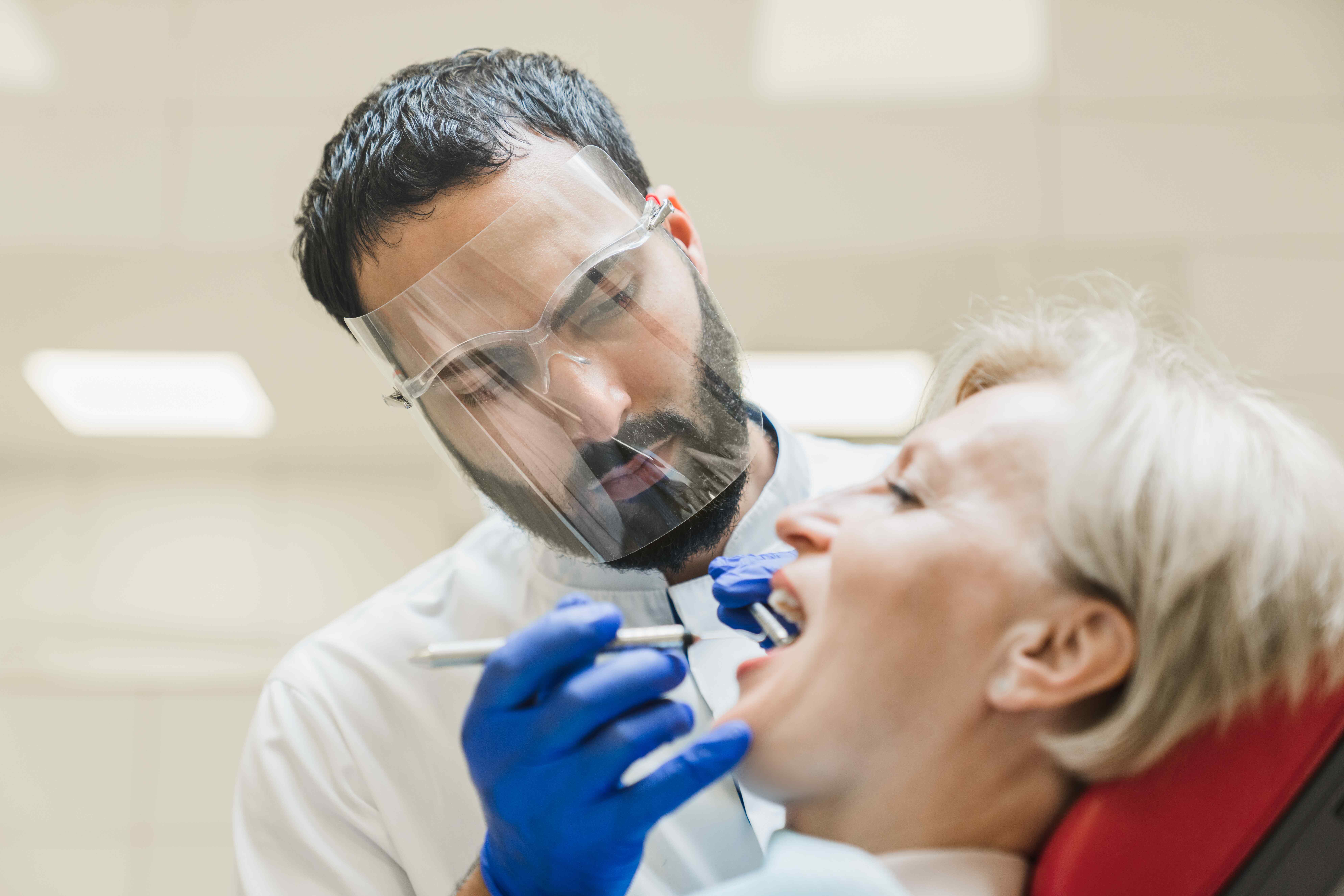Maintaining healthy gums involves more than just brushing, flossing, and regular dental visits. Increasing evidence…
The Pros and Cons of Braces vs. Aligners

Sometimes our teeth don’t come in quite straight, or other medical or dental issues occur that can cause gaps or misalignment. Crooked teeth can impact both your smile and your oral health. Orthodontics can give you a permanent solution, and today there are more options than ever before. We’ll focus on the two most popular—braces and clear aligners.
What are orthodontics?
Orthodonture is the branch of dentistry dealing with the correction or prevention of irregularities in tooth alignment. Many dental practices also offer orthodontic treatments so you don’t have to find another practice.
Orthodontic treatments are more than just a cosmetic solution. In addition to affecting confidence, misaligned teeth can affect oral and gum health, and can also aggravate the jaw or cause other issues. Straightening the teeth through orthodonture can help improve both the beauty and health of your smile, making it a worthwhile investment.
Things to consider in deciding on an orthodonture treatment are the level of correction needed, patient age, lifestyle, and price.
Braces and aligners are both FDA-approved orthodontic treatments, are often covered by dental insurance, and may be eligible expenses for FSAs and HSAs. The cost is usually comparable for each option, but you should consult your dentist or orthodontist.
The case for braces
Braces is the term we use to refer to orthodontic treatment that uses metal bands, brackets, and wires to guide teeth to the desired position. Treatment with braces can also involve use of appliances such as headgear and retainers. Braces are put on by an orthodontist and require regular check-in and adjustment visits.
Effectiveness
Whether the traditional metal braces or new lingual (behind-the-teeth) or ceramic kind, braces are effective for almost every type of case requiring orthodontic treatment. Since they adhere directly to teeth, they exert more force and are more powerful than aligners.
Ease
Braces can also move teeth into alignment fairly quickly, typically averaging a year or two. They don’t require patients to remember to do anything—they’re a “set-it-and-forget-it” treatment (other than orthodontist appointments for adjustments). This makes braces an ideal option for younger patients who may not have the discipline to monitor wearing time or to keep track of an appliance.
Options
Today there are more options than the traditional “tin grin” option of years ago. Lingual braces are placed behind the front teeth, so they are not less visible. And ceramic braces are close to the natural color of teeth, so are less noticeable from a distance.
Source: Clear Aligners Or Metal Braces? | Colgate®
Braces: The Cons
Aesthetics and discomfort
Many people would rather find an alternative to traditional braces because of the aesthetic. There’s no denying that metal braces are more noticeable. Often food can get lodged in brackets on the teeth, which is unsightly. The brackets and wires can rub against the inside of the mouth, which can be uncomfortable or painful
Brushing and flossing
Similarly, brushing and flossing can be more difficult with braces, which can lead to bad breath and cavities. Your dentist can give you tips for effective brushing and flossing.
Food restrictions
Braces wearers are told to avoid certain foods, like hard candy, popcorn, and bagels. Hard, crunchy, or chewy foods can break or otherwise damage the bands and wires comprise braces.
The case for aligners
Customized
Aligners are removable, custom-made clear plastic pieces that are worn over the teeth. The dentist or orthodontist will perform a 3D scan of the patient’s mouth and then create a set of aligners out of medical-grade plastic that will move the teeth into position over time.
Effective
Aligners are a great option for patients who need relatively minor corrections. Worn correctly and for the appropriate amount of time, aligners can make a difference in patients’ smiles in 6 months to 2 years.
Nearly invisible and painless
Most aligners are clear, so are almost impossible to detect from even short distances. Since they are flush against the teeth, there is no abrasion on the inside of the mouth. There may be some pain at the start of treatment and when switching to a new aligner, but this is usually short-lived.
Easy to brush and floss
Since aligners are removable, patients can brush and floss as they normally would.
Aligners: The Cons
Requires discipline
Aligners must be worn 20-22 hours per day in order to be effective. The patient also needs to keep track of their appliances when removing them for eating, as replacements can be expensive.
Warping and staining
Since the aligners are removable, there are no food restrictions. However, the plastic they are made of can stain easily, and can also warp with heat, so certain beverages should be avoided.
More oral care
While there are no impediments to brushing and flossing, patients who wear aligners need to brush more often—after every time they eat, even snacking—to avoid bad breath and cavities.
Source: Braces vs. Clear Aligners | American Association of Orthodontists (aaoinfo.org)
Contact Felton Dentistry for Orthodonture Options
The dental professionals at Felton Dentistry are experts in the latest in orthodontic treatments in Chester, VA. Give us a call today at 804-717-2099 to learn about your options for a healthy, straight smile.


